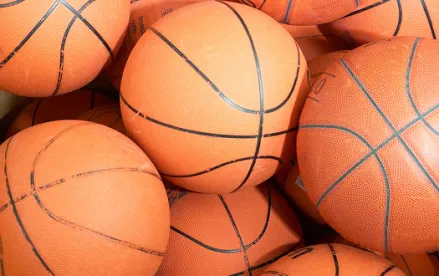Justice Kavanaugh's concurring opinion is one to watch.
The Supreme Court’s unanimous ruling in favor of student-athletes in their antitrust dispute with the National Collegiate Athletic Association (NCAA) over education-related benefits is certainly a boon for the players. But it may be Justice Brett Kavanaugh’s concurring opinion that will prove more significant. Instead of restricting his analysis to education-related benefits, Justice Kavanaugh said he wrote his concurrence specifically to underscore his belief that the NCAA’s remaining compensation rules (e.g., restrictions on salaries and the sale of name, image, and likeness) may violate antitrust laws as well.
Justice Neil Gorsuch wrote the July 21, 2021, majority opinion which held that the NCAA does not get a free pass when it comes to antitrust law. He said the lower courts were correct in applying antitrust scrutiny to the NCAA’s “amateur” requirement of athletes which denies them compensation for what they would command in a competitive market.
At issue is the agreement between the NCAA and its member schools to limit compensation for student-athletes. Current and former students sued under Section 1 of the Sherman Antitrust Act which makes illegal any contracts or conspiracies that restrain trade or commerce. The court noted what a profitable enterprise collegiate sports really is, generating billions of dollars in revenue and alumni donations, as well as publicity and student enrollment.
A district judge let stand the NCAA’s rules limiting undergraduate athletic scholarships and other compensation related to athletic performance but enjoined certain NCAA rules limiting the education-related benefits schools may extend to athletes.
On June 17, 2020, the Ninth Circuit held that the rules limiting education-related benefits for student-athletes are impermissible restraints on trade that violate Section 1 and that the students proved that the rules had significant anticompetitive effects. The decision enabled student-athletes to receive a variety of education-related, non-cash benefits above the cost of attending school, which previously served as the cap on compensation. The NCAA maintains that demand for college sports is based, at least in part, on the amateur status of the players. Critics say this is a ruse by the NCAA to usurp profits generated by student-athletes. Ninth Circuit Judge Milan Smith, in his concurring opinion, called the NCAA “a cartel of buyers acting in concert to artificially depress the price that sellers could otherwise receive for their services.”
The NCAA argued to the Supreme Court that the lower courts should have given its restrictions at most an “abbreviated deferential review” or “quick look” before approving them rather than applying a deep “rule of reason” analysis required to determine whether conduct or circumstances cause an illegal restraint of trade. The NCAA argued that it is a joint venture and that collaboration among its members is necessary to offering consumers intercollegiate games. But, Justice Gorsuch said, “The NCAA accepts that its members collectively enjoy monopsony power in the market for student-athlete services, such that its restraints can (and in fact do) harm competition. Unlike customers who would look elsewhere when a small van company raises its prices above market levels, the district court found (and the NCAA does not here contest) that student-athletes have nowhere else to sell their labor. Even if the NCAA is a joint venture, then, it is hardly of the sort that would warrant quick-look approval for all its myriad rules and restrictions.”
“That some restraints are necessary to create or maintain a league sport does not mean all ‘aspects of elaborate interleague cooperation are,’’ Justice Gorsuch wrote.
“While a quick look will often be enough to approve the restraints ‘necessary to produce a game’ … a fuller review may be appropriate for others.” He said NCAA’s wage-fixing rules “fall on the far side of this line.” He added that the complex question over whether the benefit of these restrictions can be attained with lighter ones requires “more than a blink to answer.”
The NCAA argued that the court must follow its 1984 decision in NCAA v. Board of Regents of University of Oklahoma, 468 U.S. 85 (1984), which dealt with the NCAA’s rules restricting schools from televising football games (not student-athlete compensation). The NCAA relied on a passage which said, “The NCAA plays a critical role in the maintenance of a revered tradition of amateurism in college sports. There can be no question but that it needs ample latitude to play that role, or that the preservation of the student-athlete in higher education adds richness and diversity to intercollegiate athletics and is entirely consistent with the goals of the Sherman Act.”
Justice Gorsuch was not moved. The 1984 decision did not condemn the broadcast restrictions as per se unlawful, Justice Gorsuch wrote, but used an abbreviated antitrust review “as a path to condemnation, not salvation.” While courts must take care in assessing such restraints, he said that does not mean courts should “reflexively reject all challenges to the NCAA’s compensation restrictions.”
“When it comes to college sports, there can be little doubt that the market realities have changed significantly since 1984,” Justice Gorsuch observed, pointing to the dramatic increase in the amounts and types of benefits schools can provide their athletes. “Given the sensitivity of antitrust analysis to market realities—and how much has changed in this market—we think it would be particularly unwise to treat an aside in Board of Regents as more than that. This Court may be ‘infallible only because we are final’ … but those sorts of stray comments are neither.”
The NCAA also argued that a rule of reason analysis is inappropriate because the NCAA and its member schools are not “commercial enterprises,” but merely oversee athletics. Justice Gorsuch punted this issue back to Congress, saying the legislature has modified antitrust laws for certain industries before and could do it again.
“[U]ntil Congress says otherwise, the only law it has asked us to enforce is the Sherman Act, and that law is predicated on one assumption alone — ’competition is the best method of allocating resources’ in the Nation’s economy,” Justice Gorsuch wrote.
In his concurring opinion, Justice Kavanaugh sent strong signals that he did not buy the NCAA’s purported procompetitive justification for restricting compensation: that the restrictions are necessary to maintain amateurism, which is a fundamental component of the college sports product. He labeled the argument “circular” and based on “innocuous labels,” explaining the NCAA cannot avoid the law governing price-fixing labor simply by incorporating price-fixing labor into the definition of the product.
While acknowledging the many traditions that accompany college sports, Justice Kavanaugh concluded that “those traditions alone cannot justify the NCAA’s decision to build a massive money-raising enterprise on the backs of student athletes who are not fairly compensated. . . . The NCAA is not above the law.” He specifically noted the adverse impact of the restrictions on Black and low-income Americans.
At minimum, Justice Kavanaugh’s concurrence gives student athletes a powerful tool in their ongoing battle. But it could also serve as the authority and/or cover lower courts need to undo the NCAA’s remaining compensation restrictions.







 />i
/>i
